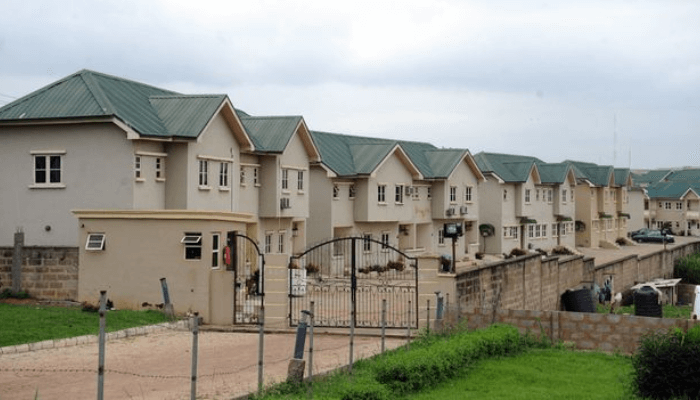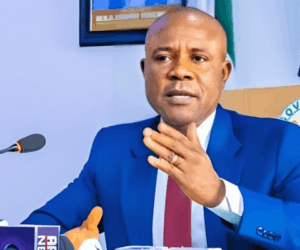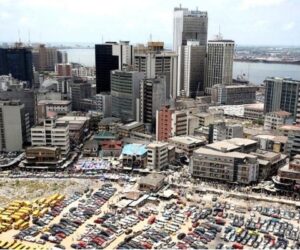Nigeria’s housing crisis remains a stubborn reality; despite numerous policy interventions, our mortgage industry remains underdeveloped. As of early 2025, the nation still grapples with an estimated 28 million-unit housing deficit and a mere N88 billion allocation to the Federal Ministry of Housing and Urban Development in the 2025 budget, an amount believed to be grossly inadequate by experts like the Housing Development Advocacy Network (HDAN).
Although signs of progress spark amid the gloom. Minister of Housing and Urban Development Ahmed Musa Dangiwa has secured N50 billion in supplementary funding for housing and has expanded the Renewed Hope Agenda’s reach by establishing 14 active construction sites delivering 10,112 housing units, along with reforms in land titling and agency recapitalisation.
“To bridge the gap, Nigeria must, first and foremost, transform NHF into a CPF-style institution (mandatory), with universal contributions from both employees and employers, creating a permanent fund from which Nigerians can tap into mortgage financing.”
Meanwhile, the Federal Mortgage Bank of Nigeria (FMBN) has disbursed N59.3 billion in housing loans, delivered 2,465 units, generated 61,625 jobs, and extended low-rate products, including rent-to-own and NHF-backed loans, to 17,980 Nigerians.
These are moves in the right direction, but they merely demonstrate urgency, not transformation.
The enduring challenge remains: Nigeria’s mortgage system is fragmented, opaque, and exclusionary. Primary mortgage banks remain hesitant to lend amid unstable income conditions and volatile property prices. Moreover, there is no unified rate structure or streamlined procedure, leaving aspiring homeowners mired in red tape and uncertainty.
This is where Singapore’s Central Provident Fund (CPF) system offers a powerful inspiration. In Singapore, workers and employers both contribute to a national savings pool, with accounts dedicated to housing, healthcare, retirement, and more. Crucially, more than 80 percent of first-time homebuyers in Singapore now finance homes almost entirely via CPF, often with minimal cash outlay. This is as a result of affordable, inclusive homeownership backed by institutional reliability.
Read also: Cracks in the foundation:Nigeria’s urban housing crisis (1)
How might this translate to Nigeria? The groundwork is already laid through the National Housing Fund (NHF). With reform, NHF could become our CPF: a contributory savings fund where both formal and informal sector workers pool resources monthly, unlocking low-interest, long-tenure mortgages and rent-to-own schemes. Already, FMBN offers NHF-backed loans up to N50 million at 6 percent interest over 30 years, with only 10 percent required equity, vastly more affordable than market rates of 18 to 23 percent and up to 30 percent equity demands.
Furthermore, the government’s Renewed Hope Homeownership Strategy offers rent-to-own options at 7 percent interest over 30 years, another step toward accessibility. What remains is integration and scale.
To bridge the gap, Nigeria must, first and foremost, transform NHF into a CPF-style institution (mandatory), with universal contributions from both employees and employers, creating a permanent fund from which Nigerians can tap into mortgage financing.
Standardise and simplify processes, and align mortgage origination, foreclosure, and administration across states, emulating NMRC’s push for uniform standards and mortgage bonds.
Also, amplify funding; fulfil the push to increase the housing budget to N500 billion annually, enabling the broad rollout of affordable housing across states and local government areas.
Above all, leverage partnerships – international tools like the Shelter Afrique Development Bank’s N50 billion commitment and innovative credit vehicles such as CrediCorp, designed to broaden credit access.
Singapore’s model is not a miracle; it is a product of institutional discipline, fiscal commitment, and public trust. In our cities and slums, echoes of those successes exist: one Reddit contributor suggested, “Nigeria needs Singapore-style construction programmes: acquire slums by decree… build cheaper high-rise families… sell at subsidised rates.”
That vision resonates deeply, especially when paired with a CPF-like instrument that makes homeownership predictable, affordable, and equitable.
Of course, Nigeria’s complexities are distinct. We must navigate a more dispersed economy, informal employment, income volatility, and governance challenges. But the core principle holds: pooling national savings toward a shared goal – housing – is both achievable and transformative.
Implementing this requires legislative clarity, regulatory oversight, and widespread awareness. The proposed Real Estate Regulatory Authority, recently affirmed during the 2025 sector retreat, could function as this system’s steward, overseeing contributions, disbursements, standards, and transparency.
Nigeria’s mortgage system will not grow merely through piecemeal loans or one-off projects. It must evolve into a credible, contributory, federally backed mechanism, one that securitises savings, expands access, stabilises interest, and catalyses mass homeownership. Singapore did it by design. Nigeria can do it by commitment.
The Renewed Hope Agenda is not just about building homes. It is about building futures. By adapting Singapore’s model, through NHF reform, robust funding, institutional backing, and unified regulation, we can ensure that every Nigerian who dreams of a home has a viable path to make it real.









